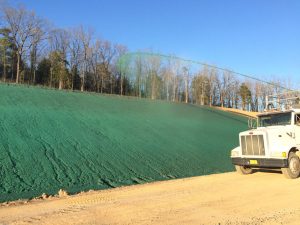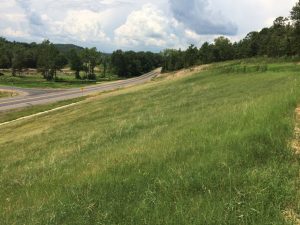Engineered Solutions: Barren Arkansas Roadside Springs to Life After Soil Amendments

After completing an open cut slope for a recent highway project, the Arkansas State Highway and Transportation Department (AHTD) encountered a difficult mitigation challenge: a soil bed totally unsuitable for organic growth. The highly acidic soil, composed primarily of clay, rejected initial attempts at sustainable vegetation and threatened to create a high erosion environment.
Soil analysis confirmed the poor growth conditions. Clay content was measured at 50 percent; such high concentrations inhibit chemistry as evidenced by a very low pH of 4.6. Because clay binds soil nutrients, biological activity also was low. Not surprisingly, organic matter readings were only 1.5 percent.


Seeking a Solution
AHTD agreed to a test case of the area. On one side of the slope, a traditional straw-and-perennial seed system was deployed; on the opposite side, Profile Products followed its soil test with a sequence of amendments.
Based on test recommendations, Profile applied ProGanics® BSM™, a biotic soil media made from naturally derived components, at 4,000 lbs./acre to create a healthy soil foundation. It followed with three agronomic formulations: JumpStart™, a penetrating liquid to improve moisture infiltration in the clay, at 80 lbs./acre; BioPrime®, a long-acting biostimulant, at 80 lbs./acre; and NeutraLime™, a pH adjuster, applied at 400 lbs./acre.
Next, Flexterra® HP-FGM™, a high-performance, flexible growth medium, was applied in two phases: first with a small amount of fertilizer (15-30-15), then via a second pass without fertilizer. Finally, perennial seed was applied. All products were sprayed onto the site over a single day.
Results
The combination of amendments, led by ProGanics to accelerate biologic activity and Flexterra to lock seeds onto soil and prevent site erosion, allowed the perennials to establish quickly and grow uniformly despite less than optimal rainfall. Within three months, the amended slope showed lush vegetation; AHTD engineers estimated germination on the control side at 20 percent. AHTD subsequently approved the regimen for use at other sites in its system.


